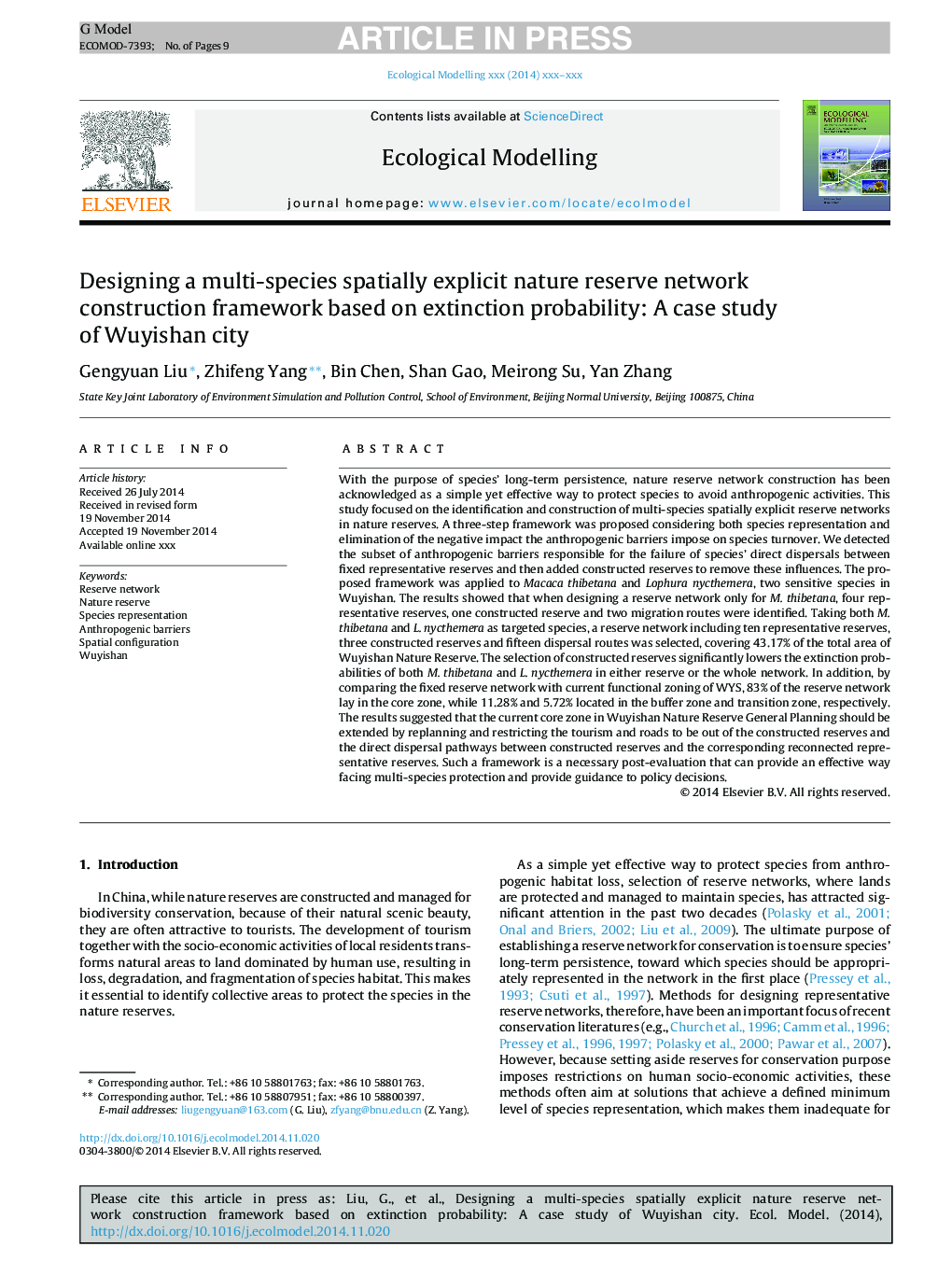| کد مقاله | کد نشریه | سال انتشار | مقاله انگلیسی | نسخه تمام متن |
|---|---|---|---|---|
| 6296389 | 1617429 | 2015 | 9 صفحه PDF | دانلود رایگان |
عنوان انگلیسی مقاله ISI
Designing a multi-species spatially explicit nature reserve network construction framework based on extinction probability: A case study of Wuyishan city
ترجمه فارسی عنوان
طراحی چارچوب ساخت شبکه خصوصی ذخایر ماهواره ای چند جانبه مبتنی بر احتمال انقراض: مطالعه موردی شهرستان وویشان
دانلود مقاله + سفارش ترجمه
دانلود مقاله ISI انگلیسی
رایگان برای ایرانیان
کلمات کلیدی
رزرو شبکه ذخایر طبیعت، نمایندگی گونه، موانع انفعالی، پیکربندی فضایی، واییشان،
موضوعات مرتبط
علوم زیستی و بیوفناوری
علوم کشاورزی و بیولوژیک
بوم شناسی، تکامل، رفتار و سامانه شناسی
چکیده انگلیسی
With the purpose of species' long-term persistence, nature reserve network construction has been acknowledged as a simple yet effective way to protect species to avoid anthropogenic activities. This study focused on the identification and construction of multi-species spatially explicit reserve networks in nature reserves. A three-step framework was proposed considering both species representation and elimination of the negative impact the anthropogenic barriers impose on species turnover. We detected the subset of anthropogenic barriers responsible for the failure of species' direct dispersals between fixed representative reserves and then added constructed reserves to remove these influences. The proposed framework was applied to Macaca thibetana and Lophura nycthemera, two sensitive species in Wuyishan. The results showed that when designing a reserve network only for M. thibetana, four representative reserves, one constructed reserve and two migration routes were identified. Taking both M. thibetana and L. nycthemera as targeted species, a reserve network including ten representative reserves, three constructed reserves and fifteen dispersal routes was selected, covering 43.17% of the total area of Wuyishan Nature Reserve. The selection of constructed reserves significantly lowers the extinction probabilities of both M. thibetana and L. nycthemera in either reserve or the whole network. In addition, by comparing the fixed reserve network with current functional zoning of WYS, 83% of the reserve network lay in the core zone, while 11.28% and 5.72% located in the buffer zone and transition zone, respectively. The results suggested that the current core zone in Wuyishan Nature Reserve General Planning should be extended by replanning and restricting the tourism and roads to be out of the constructed reserves and the direct dispersal pathways between constructed reserves and the corresponding reconnected representative reserves. Such a framework is a necessary post-evaluation that can provide an effective way facing multi-species protection and provide guidance to policy decisions.
ناشر
Database: Elsevier - ScienceDirect (ساینس دایرکت)
Journal: Ecological Modelling - Volume 318, 24 December 2015, Pages 109-117
Journal: Ecological Modelling - Volume 318, 24 December 2015, Pages 109-117
نویسندگان
Gengyuan Liu, Zhifeng Yang, Bin Chen, Shan Gao, Meirong Su, Yan Zhang,
